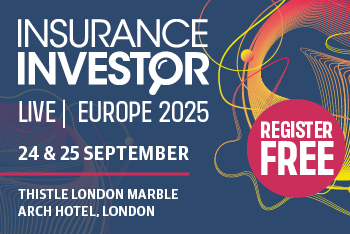 @Pixabay.
@Pixabay.
A panel of senior figures look at challenges for operational excellence – where do you start? What should your goals be, and what are the big-ticket issues to consider? As well as the opportunities when it all comes together.
“What steps need to be taken when creating a road map?”
That was the question posed to panellists at the recent Clear Path Analysis webinar, in conjunction with SS&C Advent, on “Business Growth and Efficiency: Devising your Roadmap to Operational Excellence”, which now forms part of our exclusive new report.
The report features Amy Harlacker, Managing Director, Head of Investor Services and Fund Operations, Commonfund, John Gidman, Chief Operating Officer, Loomis Sayles, Patrick Whitehead, Executive Director and Operating Partner, Morgan Stanley Capital, and Mike Kendall, Senior Director, Solutions Management, SS&C Advent, giving their thoughts on process, operations, and discovering the best way to facilitate change.
What steps need to be taken when creating a road map?
The first order of business was to break down what we meant by a “roadmap” – what do you need, how much information is necessary, and what kind of information do you even need to build a roadmap?
The panellists were all in agreement - if you don’t know what the end goal is, then you’re unlikely to reach a satisfactory outcome.
“We [Loomis Sayles] needed an understanding of what we wanted to achieve and be focused on what we were trying to achieve,” said Gidman, starting off the discussion with how one should look at the process. “We had adopted a strategy that we call ‘back to front’. You hear many vendors talk about front-to-back, but our approach was beginning with the back and then getting us to the front office.”
This strategy was popular amongst the panellists – essentially root cause analysis; what issues needed to be addressed in the current processes, and what was the end goal to achieve them?
Then they needed to work backwards to determine how they could get from point A to point B with minimal cost, disruption, and time. The panellists were all in agreement that this was easier said than done, and in the transcript, they go into great detail about not only the foibles and best-made plans that crashed and burned, but also great lessons learned and success stories from their own experiences.
One of those was from Harlacker, when asked, “How do you ensure that the implementation of long-term strategic plans causes no disruption to operational practices?”
She spoke about how, as part of a smaller company, which largely works with other teams as part of an outsourced Chief Investment Officer company, it was important for them to have smooth internal processes to maximise efficiency.
This was because it’s critical to have operational excellence as a leaner company to cover resources that might not be as readily available as they are in bigger companies.
"“Establishing a governance structure, for me, is important for getting started;
Who is the project sponsor? What is the team?"
In one example, she said her company, Commonfund, set out to change its operating structures and bit off more than it could chew.
Attempting to change many aspects at once resulted in lessons learned regarding the level of governance needed to implement change and keep track of all the plans.
“Establishing a governance structure, for me, is important for getting started; Who is the project sponsor? What is the team?,” she said. “I like to make sure that there’s a cross-functional team and we spend time identifying what the roles and responsibilities are for each of the team members. We solidify the budget for the project, and we make sure that there’s a plan defining the goals, objectives, and the timeline.”
This, she said, meant there would be fewer issues with ownership and leadership internally, and coupled with a supportive culture, would result in problems getting solved more quickly and with fewer headaches along the way.
“'Plans are worthless, but planning is indispensable’. You need to have the
wherewithal to detect challenges and the agility to address them.”
These themes were echoed by the other panellists, as well; plan, plan, plan and then plan some more being the main one.
Without a well-structured idea of what you want, who is in charge and how much it is all going to cost, you could easily go off-track.
“You need to make sure you have the infrastructure in place,” said Gidman. “I go back to the words of Dwight Eisenhower, ’Plans are worthless, but planning is indispensable’. You need to have the wherewithal to detect challenges and the agility to address them.” Planning, he said, gives you that.
To read this summary in full and the rest of the report, please click here.
Please Sign In or Register to leave a Comment.
SUBSCRIBE
Get the recent popular stories straight into your inbox







